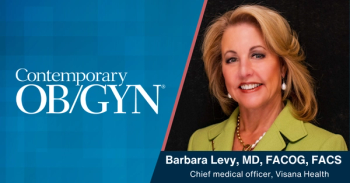
Pathophysiology of uterine fibroids
A better understanding of the pathophysiology of uterine fibroids (UFs) will enable healthcare providers to deliver high-quality informed care to their patients, according to Ayman Al-Hendy, MD, PhD, a professor of ob/gyn at Pritzker School of Medicine, University of Chicago.
Al-Hendy, who spoke on the basic pathophysiology of UFs at the
“Pathophysiologyalso enables providers to understand the mechanism of action of the various treatment tools, so they can tailor and match an appropriate treatment to a specific patient,” Al-Hendy told Contemporary OB/GYN. “Treatment side effects and complications can be better anticipated and mitigated as well.”
The major risk factors for developing UFs are exposure to environmental insults, hyper-responsiveness to estrogen, obesity, vitamin D deficiency and altered microbiota.
“In addition, in utero exposure to diethylstilbestrol (DES) increases risk of utertine fibroids later in adult life,” Al-Hendy said. “It has also been shown that early-life exposure to genistin and other estrogenic isoflavones like soy formula and hair relaxers can increase the risk.”
The key pathways are estrogen, progesterone, DNA damage, transforming growth factor beta, growth factors, the canonical Wnt pathway and extracellular matrix (ECM) remodeling.
However, the medical field is lacking a full understanding of the ethnic disparity of UFs and why they are more common and more severe in women of color.
Meanwhile, the current classification system for UFs is based on the location of the fibroid lesion, which correlates poorly to patient symptoms and clinical course, according to Al-Hendy. “For example, we may see fibroid patients with the same size, number and location of fibroids,” he said. “But one patient will suffer severe symptoms and another patient will be asymptomatic. Thus, this limits our ability to counsel young patients with early fibroid disease on what to expect and if their tumors will continue to progress and cause severe symptoms or if their tumors will continue to be mild or asymptomatic.”
A proposed replacement classification system from the University of Chicago is based on the stiffness or rigidity of the fibroid tissue itself, as measured by a special type of ultrasound called shear wave elastography (SWE). Tumors would be classifed as soft, pliable, firm or hard.
“This improved classification would correlate better with patient symptoms because it is reflective of the tumor biology, not simply the tumor’s location,” Al-Hendy said.
Interventions for UFs are surgical, radiology and medical treatment (both hormonal and non-hormonal).
“But we have limited safe treatment options for fibroid patients who want to preserve their fertility potential,” Al-Hendy said. “We also do not understand how fibroids cause heavy menstrual bleeding or infertility.”
Fortunately, there are now effective and safe novel, non-surgical oral treatment options that are FDA-approved for UFs, such as elagolix with add-back therapy. Relugolix combination treatment is likely nearing FDA approval.
“Patients are encouraged to be aware of these unique therapy options and discuss them with their healthcare provider,” Al-Hendy said. “However, as with any other medical disease, providers are encouraged to explore all options available, starting with simple noninvasive therapies, with surgery as the last resort.”
__
Disclosures
Al-Hendy is a consultant to AbbVie, Myovant, OBS-EVA, Novartis and Bayer.
Newsletter
Get the latest clinical updates, case studies, and expert commentary in obstetric and gynecologic care. Sign up now to stay informed.











